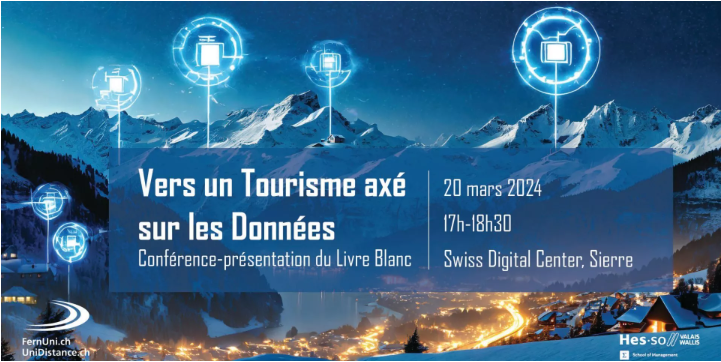Touristen aus den Golf-Staaten – ein attraktiver Markt für die Schweiz
SegmentDeClientele MarcheEmetteur PaysDuGolfeEine Analyse vom Walliser Tourismus Observatorium
Tourists from the Gulf countries, more specifically from the GCC (the Gulf Corporation Council Countries, i.e. Saudi Arabia, Kuwait, Bahrain, Qatar, the United Arab Emirates and the Sultanate of Oman) are an attractive market for Switzerland as they rank 10th in terms of total overnight volume, 8th in terms of turnover and 1st in terms of daily expenditure. Across all markets abroad, the total turnover from GCC accounted for 5.1% of the market share in 2013 and a positive market growth is expected from this market (Figure 1). It is acknowledged that the GCC tourist is a high spender where the average daily spend of an individual in Switzerland is 530 CHF (Switzerland Tourism, 2014).
Those tourists typically visit Geneva, Bernese Oberland, Zurich Region & Lake Geneva Region (Vaud) with the preferred destinations being Beatenberg, Geneva, Interlaken and Montreux. Yet, visitors from GCC like diversification and so look for new destinations. Ticino, St. Moritz Engadin and Gstaad are expected to gain GCC tourists in the mid-term period (Switzerland Tourism, 2014).
GCC Tourists in Valais
In Valais, there are two types of tourists from GCC, those who own or rent apartments or chalets and those who stay in hotels. Between 2005 and 2012 apartments recorded a total of 111734 overnights which counts for about 0.93% of the overall overnights of the total market. For the same period, hotel occupancy recorded a total of 148’859 overnights which counts for 0.39% of the total overnights in Valais. According to available statistics the top three destinations in respect to hotel occupancy in Valais by GCC are Crans Montana (0.38%), Bagnes (0.25%) and Zermatt (0.24%) whereas for apartment occupancy those are Crans Montana (0.66%), Chablais (0.089%) & Sion Region (0.05%) (OFS; Observatoire Valaisan du Tourisme, 2014).
Profile and Characteristics of the Arab Gulf Tourists
Type of Traveler
There are different traveler profiles such as the independent traveler and the middle-income traveler who is expected to emerge in tandem with the continuous important segments such as the business traveler, family traveler and seasonal traveler.
Leisure travel is dominated by the family market segment. However the market can be divided into: family market (young family with small children or older family); VFR market; Couples (young couples or older couples); Youth (single travelers or group of friends); and Honeymooners (UNWTO, 2012).
Tourists from this market are individual travelers who do not like to mingle with other travelers from the GCC countries. They are known to be generously hospitable and when they travel expect to have the same type of hospitality. Luxury; service excellence and the most innovative technology attract this type of market segment. They also rely on well-equipped hotels and expect respect to their religion and customs; so kind smiles, friendliness of hospitality, tolerance towards children and patience are appreciated (Frost & Sullivan and Insights Middle East, 2014 / Hotelleriesuisse & Suisse Tourisme, 2013).
Travel Companion & Group Size
Most of the GCC tourists travel with their immediate and extended families. Depending on family status, this could include governesses, secretaries, cooks and drivers (up to 30 or even 60 members). Yet, the majority is between 4 and 12 people (Hotelleriesuisse & Suisse Tourisme, 2013) (UNWTO, 2012) (Visit Britain, 2010).
Type of Accommodation
Their preference to accommodation is service apartment due to family size, cultural needs, traditional bonding, long stays and lifestyle needs. Guests enjoy remarks of respect towards their culture and religion. Even small gestures can play a factor such as providing Arab TV channels for children, a prayer mat with compass, etc. (Hotelleriesuisse & Suisse Tourisme, 2013 / Malhorta, 2012).
Eating Habits
Generally speaking, practicing Muslims follow a dietary code which forbids the consumption of pork and alcohol. They eat halal, which means that the meat must come from animals killed according to Muslim ritual. When halal meat is not available Muslims eat fish or vegetarian dishes. Yet, these clients do not mind local specialties as long as they are halal. For hotels therefore, it is not always easy to cater for the Arab Muslim client as some visitors bring their food with them and prepare their meals in their rooms and in certain traditional families, men and women eat separately (Hotelleriesuisse & Suisse Tourisme, 2013).
Leisure Activities
Some of the main leisure activities include walking about and enjoying the atmosphere, relaxing, enjoying the hotel/resort and its facilities, enjoying the weather, shopping, dining out, going to beaches and the seaside, going on sightseeing excursions, touring and driving around and visiting friends and relatives. Overall, they enjoy the diversity of outdoor activities, lake and mountain landscapes, the fresh mountain air and hiking trails. Some visitors are interested in historical places, are willing to undertake nature excursions and others do not mind as well casinos and nightclubs. However, over the years other interests started to surface among travelers such as snow/ski holidays, spa/health oriented holidays, sporting holidays including golfing trips, music/cultural/sport events, cruise holidays and adventure trips (UNWTO, 2012) (Hotelleriesuisse & Suisse Tourisme, 2013).
Sporting events on the other hand are very popular in GCC countries, particularly, football, golf and motorsport. Western sports culture is not always understood by Muslim visitors but younger generation of men and women are increasingly interested in "soft adventures" such as paragliding and water sports. In Arab culture, men and women practice some sports separately, especially swimming. In hotels, it is recommended to organize pool schedules including the provision of hours reserved for women. It is not uncommon to see some clients entering the swimming pool area with leggings, t-shirt, wearing a scarf or a veil (Hotelleriesuisse & Suisse Tourisme, 2013).
Spending & Shopping
Shopping is important for the GCC visitor. They are fond of purchasing cosmetics products, lingerie, textile products, footwear and jewelry, mainly gold (UNWTO, 2012).
Destination Preference
Making the destination choice depends on several factors; the image of the destination; good tourist facilities; cultural familiarity; variety of shopping; good weather; exploration opportunities; visa processing; entertainment for the whole family; and quality of accommodation (Malhorta, 2012) (UNWTO, 2012).
Travel Characteristics
Travel Season
Typically, amongst the upmarket families in this segment tends to take holidays during the hot summer months (June to September) to cooler destinations. Several sources (Visit Britain, 2010 / UNWTO, 2012 / hotelleriesuisse & Suisse Tourisme, 2013 / Switzerland Tourism, 2014) note that those customers travel during the school breaks as generally, the family travel together and so trips are planned according to the children holiday breaks from school or university in summer and winter.
Source of Information
Word of mouth is a popular source but there are more tendencies to use internet for information sources using social networks such as Facebook and Twitter, websites, online travel forums and chat rooms. It is to be noted that smartphone penetration in the GCC is amongst the highest in the world with many leisure travelers planning their travel through this medium.
Booking Patterns
GCC travelers are known to be a late booking market. The middle income households and young travelers usually book less than two weeks prior travelling while the luxury traveler books at least four weeks in advance (UNWTO, 2012 / Visit Britain, 2010).
Conclusion
To further understand and serve this market there are some tips that the service sector could benefits from. During the planning and marketing stage to attract the GCC traveler, introduce new and innovative products that accommodate for the whole family; bundle secondary destinations and present different packaging; raise awareness and educate agents and hoteliers alike about the needs of this market; and enhance the presence of the service sector in the social media such as Facebook, Twitter. At the arrival and during their stay, provide special activities for children; be flexible and adapt to last minute demands and changes; Respect and provide for basic cultural requirements, such as marking Halal food on restaurant menus; provide complementary proposition to excursions; and provide booking and information platforms adapted to smartphone.
Bibliography
Frost & Sullivan and Insights Middle East. (2014). Shaping the Future of Travel in the Gulf Cooperation Council, Big Travel Effects. Amadeus IT Group. Retrieved June 06, 2014, from http://www.scribd.com/doc/228405733/Shaping-the-Future-of-Travel-in-the-GCC
His Highness Mohammed bin Rashid Al Maktoum. (2014, May). Retrieved from www.sheikhmohammed.ae: http://www.sheikhmohammed.com/vgn-ext-templating/v/index.jsp?vgnextoid=b10a4c8631cb4110VgnVCM100000b0140a0aRCRD
Hotelleriesuisse, & Suisse Tourisme (Eds.). (2013, November). L`accueil des hôtes des Etats arabes du Golfe. 1-24. Bern, Zurich, Switzerland: Läderach AG. Retrieved April 2014, from http://www.hotelleriesuisse.ch/files/pdf5/Golfstaaten_fr.pdf
IslamiFinder. (2014). IslamicFinder. Retrieved May 2014, from IslamicFinder: http://www.islamicfinder.org/faq/list.php?lang=english#8
Malhorta, S. (2012, May). Understanding theGCC Travel Market. Power Point Presentation. Retrieved April 2014, from http://www.google.ch/url?sa=t&rct=j&q=&esrc=s&frm=1&source=web&cd=1&ved=0CCgQFjAA&url=http%3A%2F%2Fwww.arabiantravelmarket.com%2F__novadocuments%2F11740&ei=wkh7U6L-GKKI0AX_h4C4Bg&usg=AFQjCNFXHF6RcvXwaKYMXzJVSOtlAeNpkA&bvm=bv.67229260,d.bGQ
OFS; Observatoire Valaisan du Tourisme. (2014, June). Sierre, Valais, Switzerland.
Pewforum. (2014). The Future of the Global Muslim Population. Retrieved May 2014, from Pew Research: Religion & Public Life Project: http://www.unesco.org/new/en/unesco/events/prizes-and-celebrations/celebrations/international-days/world-arabic-language-day
SMCCU. (2014, July 2). Retrieved from Sheikh Mohammed Centre for Cultural Understanding: http://smccudubai.wordpress.com/visitors-ask/
Switzerland Tourism. (2014). Research Report Gulf Countries. Zurich: Switzerland Tourism. Retrieved June 2, 2014, from http://www.stnet.ch/fr.cfm/etudesdemarche/offer-Marktforschung-Library-348180.html
UNESCO. (2014). World Arabic Language Day. Retrieved May 2014, from United Nations Educational, Scientific and Cultural Organization: http://www.unesco.org/new/en/unesco/events/prizes-and-celebrations/celebrations/international-days/world-arabic-language-day
UNWTO. (2012). The Middle East Outbound Travel Market with Special Insight into the Image of Europe as a Destination. UNWTO. Retrieved April 2014
Visit Britain. (2010, January). United Arab Emirates(UAE): Market and Trade Profile. visitbritain.org. Retrieved May 21, 2014, from http://www.visitbritain.org/Images/UAE_tcm139-167255.pdf
Photo : "Taken at the shrine of Imam Ali Reda in Mashad, Iran, in August, 2005." by Iahsan. Licensed under CC BY-SA 3.0 via Wikimedia Commons.





